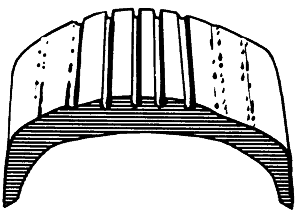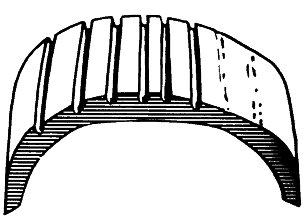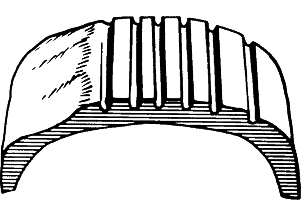Signs of Tyre Wear and what causes them
The only thing that keeps your car riding smoothly along the road and let it stick to the tarmac, gravel, mud and rocks are tyres. Having good tyres will be your insurance for stability, braking, handling, safety, fuel economy and performance of your vehicle and ensuring that they are in the best possible condition is imperative. A worn tyre is not only a hassle but can be leading to a dangerous situation on the road. Read here how to recognise what causes unusual tyre wear.
Tyre Wear Under Inflation
This type of wear usually results from consistent under inflation. When a tire is under inflated, there is too much contact with the road by the outer treads, which wear prematurely. Tire pressure should be checked with a reliable pressure gauge.
When this type of wear occurs, and the tire pressure is known to be consistently correct, a bent or worn steering component or the need for wheel alignment could be indicated. Bent steering or idler arms cause incorrect toe-in and abnormal handling characteristics on turns.

Tyre Wear Over Inflation
Excessive wear at the center of the tread indicates that the air pressure in the tire is consistently too high. The tire is riding on the center of the tread and wearing it prematurely. Many times, the "eyeball" method of inflation (pumping the tires up until there is no bulge at the bottom) is at fault; tire inflation pressure should always be checked with a reliable tire gauge. Occasionally, this wear pattern can result from outrageously wide tires on narrow rims. The cure for this is to replace either the tires or the wheels.

Tyre Wear Fathering
Feathering is a condition when the edge of each tread rib develops a slightly rounded edge on one side and a sharp edge on the other. By running your hand over the tire, you can usually feel the sharper edges before you'll be able to see them. The most common cause of feathering is incorrect toe-in setting, which can be cured by having It set correctly. Occasionally toe-in will be set correctly and this wear pattern still occurs. This is usually due to deteriorated bushings in the front suspension, causing the wheel alignment to shift as the car moves down the road.

Tyre Wear One Side Wear
When an inner or outer rib wears faster than than the rest of the tire, the need for wheel alignment is indicated. There is excessive camber in the front suspension, causing the wheel to lean too much to the inside or outside and putting too much load on one side of the tire. The car may simply need the wheels aligned, but misalignment could be due to sagging springs, worn ball joints, or worn control arm bushings. Because load has a great affect on alignment, be sure the car is loaded the way it's normally driven when you have the wheels aligned; this is particularly important with independent rear suspension cars.

Tyre Wear Cupping
Cups or scalloped dips appearing around the edge of the tread on one side or the other, almost always indicate worn (sometimes bent) suspension parts. Adjustment of wheel alignment alone will seldom cure the problem. Any worn component that connects the wheel to the car (ball joint, wheel bearing, shock absorber, springs, bushings, etc.) can cause this condition. Worn components should be replaced with new ones. The worn tire should be balanced and possibly moved to a different location on the car. Occasionally, wheels that are out of balance will wear like this, but wheel imbalance usually shows up as bald spots between the outside edges and center of the tread.

Tyre Wear Second-rib Wear
Second-rib wear is normally found only in radial tires, and appears where the steel belts end in relation to the tread. Normally, it can be kept to a minimum by paying careful attention to tire pressure and frequently rotating the tires. Some car and tire manufacturers consider a slight amount of wear at the second rib of a radial tire normal, but that excessive amounts of wear indicate that the tires are too wide for the wheels. Be careful when having oversize tires installed on narrow wheels.
